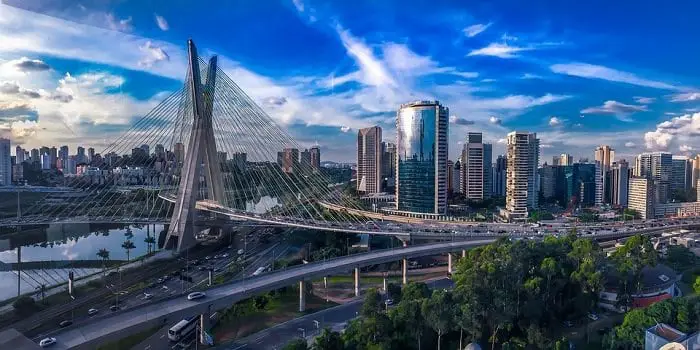Urban Planning, a relatively new profession, is becoming a point of interest for more and more people. The importance has been realised lately but certainly. The need to have better & more efficient cities cannot be neglected anymore. Scientists and researchers come up with new discovery and reports about how crucial it is to use our resources efficiently, teaching students about environmental education and cut down our carbon emission if mankind wants to survive. But even after repeated warnings such reports are buried under the soil and kept in library. Only a few groups and individuals step out of their comfort zone and try to bring about a difference and do their best in every possible manner.
It is a well-known fact that cities remains engines of economic growth and at same time biggest consumer of resources. These resources are in various tangible and intangible form. They ranges from food, water, electricity, expertise, medicines etc to name a few. Because of large consumption of resources in a city they post a challenge to optimise the consumption of resources. Minimising waste, upgrading & making use of technology, educating & awareness campaigns for citizens has helped to improve the situation but it still remains far away from what we can achieve collectively.

Pre-Planning & Post planning
To make our urban areas more sustainable focus needs to be on both new & old development. Though the cost of retrofitting remains more as compared to a new planned city but the existing development cannot be ignored. Almost 50% of population is expect to live in existing cities in a few decades and such a proportion cannot be ignored. To manage our cities better we need to make use of latest and best technology available. Such technology can be in various forms and one such is the use of softwares.
Technological Requirements – 3D modelling Softwares
A city is not as simple as perceived by eyes. It starts from deep under the ground and rises to hundreds of feet above the surface. This requires extensive use of softwares that allows the experts to work on “layers”, and having both 2 Dimensional and 3 Dimensional modelling softwares with latter being more important. An exponential increase in data processing & data mapping capabilities has enabled us to makes use of 3D modelling softwares which was otherwise limited.
A 3 D view of an area provides urban planners with much more accurate depiction of the reality. Terrain, buildings, infrastructure, aquifers, landscapes, slopes and similar crucial information are easily available and assessed while using a 3D software which are otherwise lost in 2 D models. The complexity and time taken to make use of such information from a conventional 2D software is cumbersome and overall of little importance.
Advanced 3D modelling softwares provides a much accurate picture and thus helps in better and functional model of cities. They can be used to design elements spatially, compare the existing development with the proposed development and the relation between the two. It can also be used to depict different scenarios based on how we want the urban area to grow. Another peculiar benefit will be to make comparison in the vertical & horizontal development of cities. Going for vertical development or horizontal expansion can be visualised and analysed in much better form.
Along with this “visual” representation, more functional aspect such as population & housing density will be of great advantage. Services & resources can be distributed in much efficient manner, development & building regulations will be much clear, a proper connectivity to downtown area can be worked out. Also, a 3D model will be crucial from urban design point of view.
Who uses 3D modelling for cities & why?
Private players & government bodies both uses such softwares alike. These softwares help them take a much better & informed decisions thus saving on cost. Example of few cities which made use of such softwares includes Brisbane (Virtual Brisbane), Copenhagen (https://www.kk.dk/solceller), London (https://vu.city/vucity-london/) etc. The application remains different but the concept remains same.
Key elements of city for which 3d modeling softwares can be used includes:
- Transportation Network
- Water, Sewage Pipelines
- Natural & artificial drainage
- Land use plans
- Segregation of conflicting land uses
- Urban Design
- Landscaping
- Urban Morphology
- Green & open spaces
- Mass & void maps
Much more than “Land Use Plan”
Development plans of cities are still considered as equivalent to 2D land use plans. It restricts the experts in various manner thus much needed details and information about developments are missed out frequently. The development does not take place as per the proposed plans and thus a stark difference is seen once the growth takes place. 3D modeling softwares can help with this very problem since the development, density & land use colour coding can be seen & studied in combination. This will help is reducing the differences in proposed & actual development.
Integration in Planning Education & increasing awareness among professionals
To make best use of 3D modelling softwares, the importance needs to highlight from the very beginning. Students studying urban planning needs to be made aware about the benefits which these softwares have to offer. At the same time, the working professionals who are still using the old and conventional ways needs to be made aware of using better technology which will easy their work & improve their decisions. It will take some time for the industry to make the use of 3D modeling softwares an industry standard but this needs to be started from somewhere. With the emergence of other technology such as as BIM (Building Information Modelling), GIS (Geographic Information System) & Remote Sensing, Geo-design, Urban Design we can no longer ignore or undermine the importance and need of 3D modelling softwares for our urban areas.